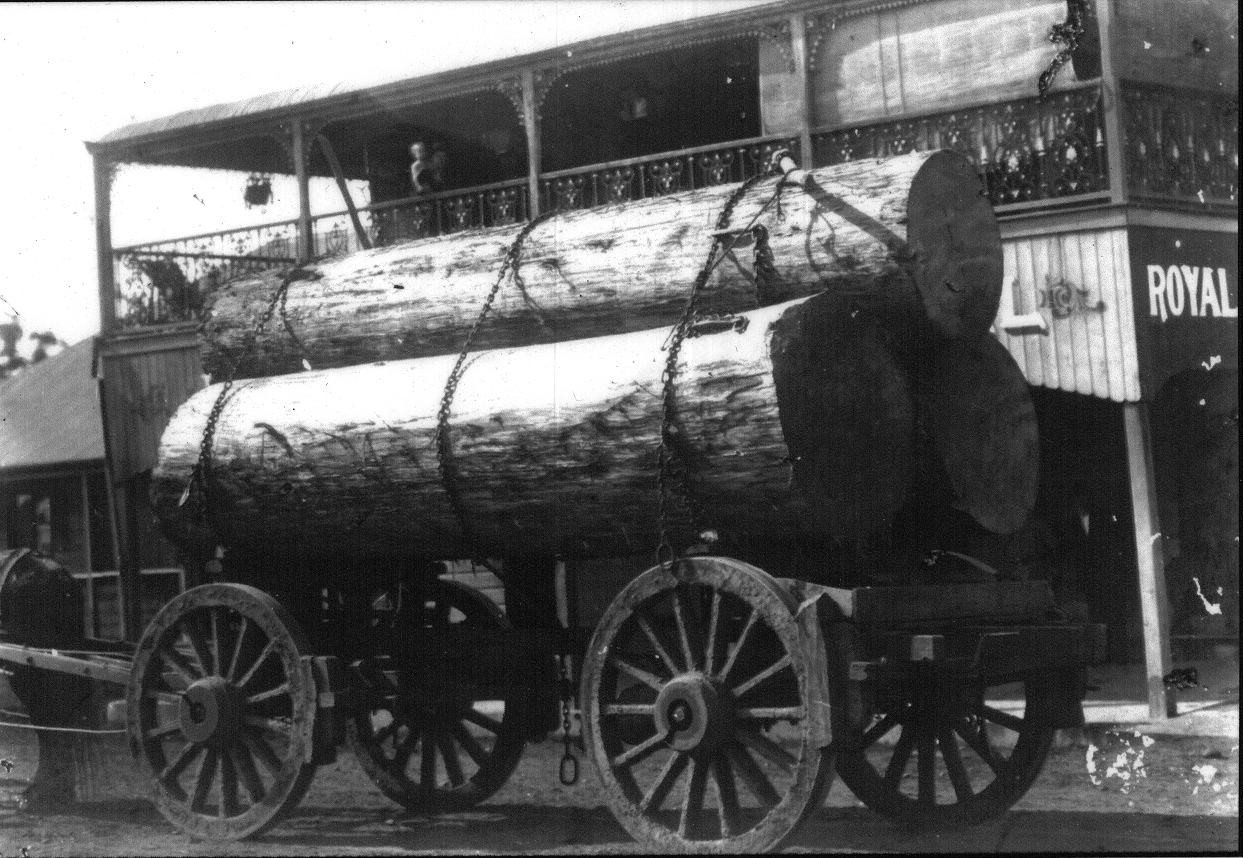

Bauple Museum & District Historical Society Inc.
 |
 Bauple Museum & District Historical Society Inc. |
|
Bauple Timber |
||
 |
 |
|
|
BAUPLE íS TIMBER HERITAGE The earliest of settlers to the Mt Bopple District (now Bauple) were attracted to the area by the great stands of timber, both hardwoods and Hoop Pine. These pioneers first set up camps near the Creeks where they could be assured of a good supply of water for themselves and their animals, then built slab huts to house their wives and families. James Isbister, one of the districts early settlers, recorded his surprise at the way the pioneers went into the bush to convert the wilds into a home. They moved the whole of their belongings onto the place they had selected, while it was still in a state of nature. A bough or bark shelter would be erected as a temporary residence until a home was built, or if the family were only a few in number, they might sleep under a dray. The only equipment `used for the construction of buildings would be a cross-cut saw, maul and wedges, an axe and a supply of nails. The material for the structure had been on the ground for centuries in the shape of growing trees, some of which. were soon split into slabs or palings for the walls. Shingles, or sometimes bark, was used for the roof. The comer posts of the settlerís home were lengths cut off a suitable tree, sunk into the ground and well rammed. For the framing and rafters saplings were used, or timber split for the purpose. Soon a rough house was built, often by men who had no previous experience of bush life, and might hail from any part of the world. Quite often it was a crude structure, but it was home and its architect was proud of it. The timber logs were snug of the forests and scrub areas by bullocks and then loaded onto bullock wagons and carted to Tiaro. They were dumped at the rafting ground at the river waiting for a suitable tide when they would be moved into the river and rafted to the sawmills in Maryborough. In 1874, one of the early timber getters, Edward Armitage, was prevented from getting any logs down the Mary River owing to the unusually dry season. The following year a big flood washed about 2000 logs into the river. Some were washed out to sea, but most were washed up onto farms and scrub areas along the river. It took Edward Armitage 5 months with a party of 3 men and a team of bullocks to haul them back into the river and eventually get them to the sawmills. Samuel Inker was engaged in timber cutting, he and Castringer are believed to be the first settlers in the Bauple District taking up residence in 1870. Other early settlers involved in the timber industry included John Stratford, the Stringers, and the Andrews brothers. Then came the Cunninghams, Herbert Missing and the Connors families. These early settlers owned horse teams and bullock teams. The Stratfords and Stringers owned several bullock teams between them. James Isbister drove teams for both families during the l880ís and early l890ís.
|
||
 |
|
|
|
|
|
Home | The Museum | Gallery | Facilities | Highlights | Membership | Contact Us |
|
|
Copyright Honeypass Ltd 2010 - 2012 |
|